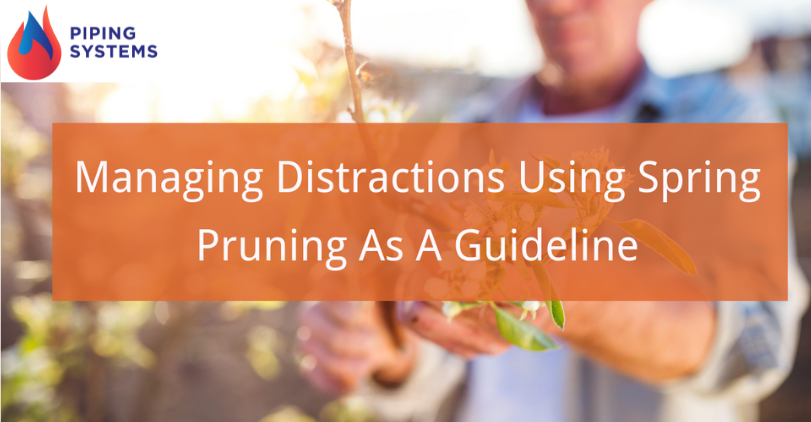Published April 22, 2019

With the warm weather slowing arriving and the need to get out and do spring yard work rolling around again, it is tempting to think about how simple that seems compared to the million and one tasks you have to do to manage in your business on a daily basis.
This is true if you are the business owner, a supervisor, or an entry-level employee.
Each position in the company has any number of small to large tasks to complete each day, and this is not even counting all the random distractions that are also going to happen.
Some of these distractions are not things that can just be avoided. It is impossible not to answer emails, not to make calls or, in most cases, not to post, network and connect on social media. These types of activities are both necessary as well as distractions, and it can be easy to get pulled into spending a significant part of the day engaged in activities that cross from necessity to distraction.
Spring Pruning Your Daily Tasks Starts With A Closer Look
Before you start pruning that tree in the backyard, you take a big picture look at the entire tree. You notice the branches that are essential to the tree for shape and structure, and then also look for the branches that are there but are not contributing to the big picture.
It is possible to take a look at your standard daily tasks the same way. Start by making a list of all the things you do on a regular daily basis. Then, look at items that can be delegated to someone else or perhaps completely eliminated from the list.
Ask yourself:
Anything that can be removed, delegated or automated can come off your list, which frees up time. However, it is critical to also look closer at the list, or the distractions will simply start eating up more time and leaving you still feeling stressed at the end of the day.
Focus on the Task at Hand and Stop Multi-tasking
To go back to the spring pruning example, you don’t start pruning the tree and then get off the ladder to go and clean the gutters. Instead, you focus on the tree first, complete that job, and then go to the next task.
Batching tasks is grouping similar types of activities together and focusing on those for a specific period of time or until the jobs are done, then moving on to something else.
This is a great way to avoid getting drawn into endless distractions on social media sites, emails, and calls.
By grouping these and setting a time limit, you are more focused on the priorities. Without jumping around to different sites, calls and emails, you are less likely to end up on irrelevant sites and posts, which increases both productivity and focus.